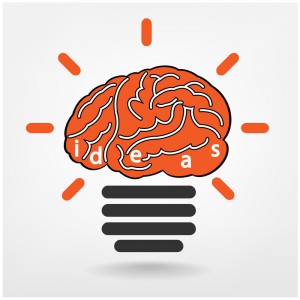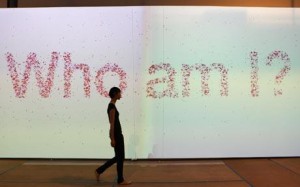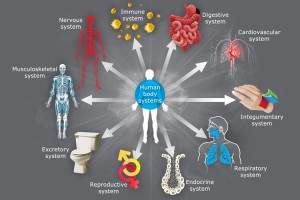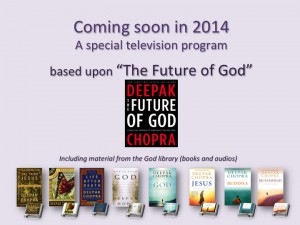By Deepak Chopra, MD, Menas C. Kafatos, Ph.D., and Subhash Kak, Ph.D.
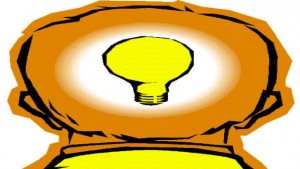 We all live in the common-sense world, trusting in our five senses as if they transmit all reality to us. Yet the quantum revolution, as we’ve detailed in the last two posts, long ago undermined such a world view. We’ve argued that “real” reality consists of a conscious universe. This is the reality we are all participating in, even though science has only recently begun to take consciousness seriously as a legitimate field of inquiry. The changes precipitated by the emerging science of consciousness have just begun to be seriously contemplated.
We all live in the common-sense world, trusting in our five senses as if they transmit all reality to us. Yet the quantum revolution, as we’ve detailed in the last two posts, long ago undermined such a world view. We’ve argued that “real” reality consists of a conscious universe. This is the reality we are all participating in, even though science has only recently begun to take consciousness seriously as a legitimate field of inquiry. The changes precipitated by the emerging science of consciousness have just begun to be seriously contemplated.
Our last task is to build a bridge from the conscious universe to everyday life, because if we don’t, people will continue to live as if common-sense reality was still reliable and correct and complete. It would be an enormous help if such a bridge already exists, and we believe it does. The only difficulty is that it’s invisible.
This can be shown through simple observation: The five senses cannot perceive the quantum world, and yet perception depends upon quantum activity in the brain; there is no other domain where matter and mind credibly meet. The quantum world is hidden from us the way the operation of the brain is hidden. If you think the word “elephant” and see an image of the animal in your mind’s eye, you aren’t aware of the millions of neurons firing in your brain in order to produce them. Yet those firings — not to mention the invisible cellular operations that keep every part of your body alive — are the foundation of the brain’s abilities.
Just as the image of an elephant is the visible end point of veiled processes, the material world is founded on a veiled reality. Moreover, to produce a single mental image, the whole brain must participate. Specific areas, mainly the visual cortex, produce mental pictures, but they are coordinated with everything else the brain does, such as sustaining the cerebral cortex, which recognizes what an image is, and maintaining a healthy body. This points to a profound link between the brain and the cosmos, at both the smallest and the largest scales- veiled non-locality and cosmic censorship.
The work of the late Polish-American mathematician Alfred Korzybski (1879-1950) is relevant here, because Korzybski worked out the layered processing that goes into the everyday processing of reality. Billions of bits of data bombard our sense organs, of which only a fraction enter the nervous system. Of that fraction, more is filtered out by the brain, which uses built-in models of reality to filter out what doesn’t fit. When people say, “You’re not hearing me” or, “You only see what you want to see,” they are expressing a truth that Korzybski tried to quantify mathematically.
Sometimes the things a person sees are simply outside the range of human experience, like our inability to see ultraviolet light. But a great deal more depends on expectations, memories, biases, fears, and simple close-mindedness. If you go to a party, and someone tells you that you are about to meet a Nobel Prize winner, you will see a different person than if you had been told he is a reformed Mafia hit man. When all the filtering and processing is complete, there is no doubt that the brain doesn’t actually experience reality but only a confirmation of its model of reality.
Two interesting points follow:
1. All models are equal as viewed from the level of the brain.
2. Reality transcends any model we can possibly make of it.
The first point undermines the notion that science is superior to other models of reality because it gathers facts, while idealism, religion, and spirituality deal in beliefs. In practice, science filters out and discards a huge portion of human experience — almost everything one would classify as subjective. Its model of external reality, the cornerstone of Newtonian physics, is as selective, as the model which shapes a religious or metaphysical reality. As far as the brain is concerned, neural filtering is taking place in all models, whether they are scientific, spiritual, artistic, or psychotic. The brain is a processor of inputs, not a mirror to reality. This is what quantum theory as advanced by John von Neumann holds. Classical science does of course offer huge successes in our interactions with the objects around us and is built on methods that are repeatable. But still, these methods do not give us the full reality, only filtered representations of reality.
As such, the second point is even more telling. If our brains are constantly filtering every experience, there is no way anyone can claim to know what is “really” real. You can’t step outside your brain to fathom what lies beyond it. Just as there is a horizon for the farthest objects that emit light in the cosmos, and a farthest horizon for how far back in time astronomy can probe, there is a farthest horizon for thinking. The brain operates in time and space, having linear thoughts that are the endpoint of a selective filtering process. So whatever is outside time and space is inconceivable – unfiltered reality would probably blow the brain’s circuits, or simply be blanked out.
Korzybski held that even mathematics was a model, subject to the limitations of all models that the brain constructs. Not everyone would agree — holding on to mathematics as a universal truth gives advanced physics its toehold on the quantum world. But we are not using these ideas as bludgeons to bash science with. Korzybski simply pointed out, using the language of mathematics, that whatever reality is, it transcends the brain.
In that single word — transcendence — there’s a level playing field between materialism and idealism. Reality transcends, or goes beyond, what the brain discerns. When all is said and done, we are caught in the paradoxical trap of believing what we see (as ordinary people) and not believing it (as theoreticians) at the same time. It was this paradox that gave rise to two competing monisms in the first place.
Maya and the “Why” of Creation
In our view, a consciousness-based universe doesn’t represent the victory of idealism over materialism. On the face of it, no previous version of idealism, whether from Plato, the Christian Neo-Platonists, or Spinoza, can survive the challenge of science and its genius at delving into “reality as given.” That idealism subsumed “reality as given” to a higher principle proved fatal in the modern world, where the advantages of science and technology are unarguable. But materialism isn’t salvaged by idealism’s failures. Deposing physical objects from their privileged position could have been accomplished before World War I if the implications of quantum theory had been followed up. It has taken more than a century, in tribute to the privileged position that common-sense reality, based on the five senses, still occupies.
We propose that consciousness-based reality overcomes the flaws of both traditional monisms. The key question comes down to meaning. The quantum and classical worlds aren’t separated merely by a physical gap. On one side the behavior of the quantum is meaningless, random, and unpredictable. A subatomic particle has no purpose or goal. On the other side, in the classical world, it goes without saying that each of us lives our life with purpose and meaning in mind, in what appears to be a linear time. To accept this as self-evident is crucial to getting out of bed every morning. Can randomness produce meaning, and if so, how?
To lead a meaningless existence is intolerable, so it’s ironic that quantum physics bases the cosmos on meaningless operations, and doubly ironic when you consider that physics itself is a meaningful activity. The resolution of this impasse was again suggested by John Archibald Wheeler, who coined the phrase “participatory universe.” He held that physicists were mistaken to see themselves as separate from the phenomena they observed, like children with their noses pressed against a bakery shop window. The observer mingles with what he observes, and the process of observation is always altering the observed object.
By definition reality is complete; therefore, whatever purpose and meaning we find in it using our limited human capacities must be a fragment of a pre-existing state, which we term the state of infinite possibilities. This state is hidden from us, just as the existence of every possible subatomic particle is hidden. The concept of a field as used in quantum physics contains this veiled relationship between the whole and its parts. There is no reason to exclude the field of consciousness from exhibiting the same relationship to its parts (hence Schrödinger’s insight that there can be only one consciousness, not many).
Cosmic censorship applies in like manner. We search for meaning because the object of our search, even though pre-existent, cannot be perceived directly. The search for meaning is at once a necessary human endeavor and a chimera. Here the ancient Indian principle of Maya proves critical. Although usually translated as “illusion,” the Sanskrit word maya, which is also the name of a goddess, is better understood as “appearance” or “distraction.” The world “out there” appears to be self-sustained, but in fact we are being distracted from the truth. The activity of the world “out there” is no more self-sustained than iron filings dancing on a piece of paper, made to move by an invisible force, a magnet hidden under the paper. In the case of Maya, the concealed mover is consciousness. Without consciousness, nothing is experienced, either “in here” or “out there.”
Maya distracts us by enticing our perceptions outward, to play in the infinite variety of Nature. We forget the hidden mover – consciousness – seduced by the five senses and “reality as given.” Maya is eternal, but accepting it as the ultimate reality depends on a kind of self-forgetting. Once we ask, “Who am I?” it becomes evident that “reality as given” doesn’t suffice. Maya cannot explain itself, while consciousness can, through self-awareness; the experience of the self by itself. The prejudice that science holds against all subjectivity is the result of Maya-based thinking. Having placed its trust in “reality as given,” science overlooks the self-evident fact that nothing can be experienced without consciousness. It is a more viable candidate for “prime mover” than the physical universe.
If enlightenment consists of seeing beyond Maya, it too isn’t mysticism but a recognition that self-awareness can know itself. The mind isn’t only the thoughts and sensations constantly streaming through it. There is a silent, invisible foundation to thought and sensations. Until that background is accounted for, individual consciousness mistakes itself, and in so doing it cannot help but mistake what it observes. This is expressed in a Vedic metaphor about the wave and the ocean: A wave looks like an individual as it rises from the sea, but once it sinks back down, it knows that it is ocean and nothing but ocean. The point for everyday life is this: You are an expression of wholeness, of consciousness itself, fulfilling the Vedic teaching, Aham Brahmasmi, “I am the universe.”
Cosmic consciousness, then, isn’t just real — it’s totally necessary. It rescues physics (and science in general) from a dead end — the total inability to create mind out of matter — and gives it a fresh avenue of investigation. The Higgs boson has gotten physics a bit closer to a unified field theory — only a bit — but we are still far away from a full theory of quantum gravity. In some versions of superstring theory, the so-called M-theories, it is deduced that a vast number of parallel universes exist, all forming what is called the multiverse.
But the multiverse cannot be an explanation of why this particular universe of ours is what it is. Having a vast number of universes emerging from empty space still does not explain where meaning comes from or why we exist. It doesn’t even account for the rise and evolution of life in this corner of our universe that we call our home planet. We exist as creatures with a foot in two worlds that are actually one, divided by appearances. Maya gives us the joy of existence “out there” while self-awareness gives us the freedom to transcend time and space.
In conclusion, quantum theory has reached the point where the source of all matter and energy is a vacuum, a nothingness that contains all the possibilities of everything that has ever existed or could exist. The quantum vacuum is not empty, it is as full as it can be. These possibilities then emerge as probabilities before “collapsing” into localized quanta, manifesting as the particles in our four dimensional space and time reality, that are the building blocks of atoms and molecules.
Where do they exist? Where is the exquisite mathematics that we have at our disposal to be found, in some sort of “real space”? That makes no sense. Every model ends where it began, in purely mental space. The probability of an event, whether a quantum event or the event of winning the Powerball lottery, only exists if there is a mind to investigate the problem. Countless acts of observation give substance and reality to what would otherwise be ghosts of existence. Did the Big Bang happen if there was no one there to witness it? No. But the witness must be conceived of as consciousness itself.
Such a conception is made less bizarre once you realize that consciousness operates the same way in us as it did at the birth of the cosmos. Babies are born with the potential to walk, speak, read, and do mathematics. It’s possible to locate which areas of the brain will eventually produce these abilities, but until then, they exist as pure potentials. If you are wedded to materialism, there must be a molecule (DNA) that functions as the source of speaking, walking, reading, and doing mathematics. But such an assumption falls apart very quickly, since: 1) It’s impossible to credit that DNA knows math, which would in essence give it a brain, and 2) Can we really believe that Shakespeare, and all other producers of words, got his inspiration from a collocation of amino acids, enzymes, and proteins?
It is more elegant and far easier to accept as a working hypothesis that sentience exists as a potential at the source of creation, and the strongest evidence has already been put on the table: Everything to be observed in the universe implies consciousness. Some theorists try to rescue materialism by saying that information is encoded into all matter, but “information” is a mental concept, and without the concept, there’s no information in anything, since information by definition must ultimately contain meaning (even if it is a sequence of 0s and 1s as in computer language), and only minds grasp meaning. Does a tree falling in the forest make no sound if no one is around to hear it? Obviously not. The crash vibrates air molecules, but sound needs hearing in order for these vibrations to be transformed into perception.
We’ve proposed that consciousness creates reality and makes it knowable — if there’s another viable candidate, it must pass the acid test: Transform itself into thoughts, feelings, images, and sensations. Science isn’t remotely close to turning the sugar in a sugar bowl into a Mozart concerto or Shakespeare’s Hamlet. Your brain converts blood sugar into words and music, not by some trick of the molecules in the brain, since they are in no way special or privileged. Rather, your consciousness is using the brain as a processing device, moving the molecules where they are needed in order to create the sight, sound, touch, taste, and smell of the world.
In everyday life, we get to experience the miracle of transformation that causes a three-dimensional world, completed by the fourth dimension of time, to manifest before our eyes. The great advantage of experience is that it isn’t theoretical. Reality is never wrong, and all of us are embedded in reality, no matter what model we apply to explain it. Reality is waiting for us to creep closer to understanding its mysteries. In the meantime, it won’t falter or come to an end. Reality will remain our home, our source, and the ground state of our being far beyond the lifetime of the foreseeable universe.
Deepak Chopra, MD is the author of more than 75 books with twenty-two New York Times bestsellers including Super Brain. Join the weightlessproject.org to eradicate obesity and malnutrition. For more interesting articles visit The Universe Within.
Menas C. Kafatos is the Fletcher Jones Endowed Professor of Computational Physics at Chapman University. He is a quantum physicist, cosmologist, climate change researcher and works extensively on consciousness and the above fields. His doctoral thesis advisor was noted M.I.T. professor Philip Morrison who studied under J. Robert Oppenheimer. Kafatos’ studies involved quantum physicists Hans Bethe, Victor Weisskopf and cosmologist Thomas Gold. He is co-author with Deepak Chopra of the forthcoming book, Who Made God and Other Cosmic Riddles. (Harmony)
Subhash Kak, Ph.D., Regents Professor of Computer Science, Oklahoma State University, Stillwater.

